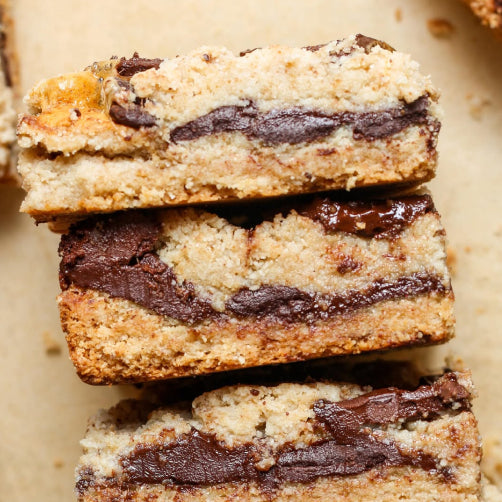

Raw Manuka Honey MGO 850+ - 500g
Our 850+ MGO Raw Mānuka Honey delivers bold, bright energy with serious Mānuka strength. Harvested from the untouched hills of New Zealand, wher...
View full details
Nothing beats the cozy atmosphere of cakes cooling on the counter and the smell of fresh cookies in the air. But many recipes call for cups of refined sugar, and that can leave you wondering if there’s a better way to sweeten your treats. Enter Manuka honey, a naturally sweet, nutrient‑rich alternative that can elevate your favorite recipes while reducing refined sugar.

Manuka honey isn’t just sweet; it’s made by bees feeding on New Zealand’s native Manuka blossoms and contains trace amounts of vitamins, minerals, and antioxidants that white sugar lacks. It also has a lower glycemic index (GI) of about 50, compared to table sugar’s 80, so it releases energy more slowly, webmd.com. That means fewer spikes and crashes and a little more power in your morning muffin.
Beyond its nutritional perks, honey acts as a natural humectant. When you bake with honey, it draws moisture into your cookies, cakes, and breads, helping them stay soft and tender for longer. Honey’s natural sugars also caramelize beautifully, giving your baked goods a deeper flavor and a golden hue.
Tip: If you’re curious about what sets Manuka honey apart from regular honey, check out our recent post on “Manuka Honey vs. Raw Honey” to learn why its MGO content makes it so special.
Honey is sweeter and contains more moisture than sugar, so swapping it in takes a few adjustments. Here’s a simple guide to get you started:
Use less honey: Honey tastes sweeter than sugar, so you don’t need as much. A good rule of thumb is to use about ¾ cup of honey for every 1 cup of sugar.
Reduce other liquids: Because honey adds moisture, reduce the liquid in your recipe by about 2 tablespoons per cup of honey used. This keeps your batter or dough from becoming too loose.
Lower the oven temperature: Honey browns faster than sugar. To prevent over‑browning, reduce your oven temperature by about 25 °F.
Add a pinch of baking soda: Honey is slightly acidic. Adding ¼ teaspoon of baking soda per cup of honey neutralizes the acidity and helps your baked goods rise properly.
Mix and match: For crispy cookies or airy meringues, you might not want to swap all the sugar. Start by replacing half of the sugar with honey to maintain texture and gradually experiment from there.

Banana bread & muffins: Honey pairs well with bananas and nuts, giving quick breads a moist and warm, caramel‑like flavor.
Granola bars & breakfast cookies: Swap some of the brown sugar for honey to bind oats and nuts together while adding subtle floral notes.
Glazes & frostings: Warm honey with a little butter for a glossy glaze on pound cakes or drizzle it over warm scones.
Feel free to experiment; each batch teaches you more about how honey behaves in your oven.
Even though Manuka honey has some nutritional benefits, it’s still a concentrated source of sugar and calories. People with diabetes should consult their healthcare provider before making significant changes to their diet. Honey’s lower GI doesn’t make it a free‑for‑all; enjoy it in moderation as part of a balanced diet webmd.com.
Using Manuka honey as a sugar substitute is an easy way to add richness, moisture, and a touch of wellness to your baked goods. With a few simple recipe tweaks, you can harness honey’s natural properties and bring a little extra magic into your kitchen. Don’t forget to explore our Manuka vs. Raw Honey post to discover more about why this golden nectar deserves a place in your pantry.
Ready to bake better? Grab a jar of Wedderspoon Manuka honey and let your creativity rise.


Our 850+ MGO Raw Mānuka Honey delivers bold, bright energy with serious Mānuka strength. Harvested from the untouched hills of New Zealand, wher...
View full details

The first organically certified Manuka Honey (in the U.S.)! In the remote, pristine landscape of New Zealand's South Island, honeybees are hard ...
View full details

Made exclusively by bees that feast on the nectar of New Zealand’s wild Manuka flowers, our raw Manuka honey is one of Mother Earth’s rarest gifts....
View full details

Our Organic Mānuka Honey Drops are made to bring comforting relief when life gets scratchy. Crafted in small batches in New Zealand, they combine g...
View full details

These honey pops are a delicious, feel-good treat made for the whole family. Crafted with Organic Mānuka Honey and Vitamin C, they’re free from art...
View full details
 Sold out
Sold out
Try all three types of our delicious Wedderspoon Manuka Honey Drops, which are all organic-certified, gluten-free, dairy-free, nut-free, and GMO-fr...
View full details
Leave a comment